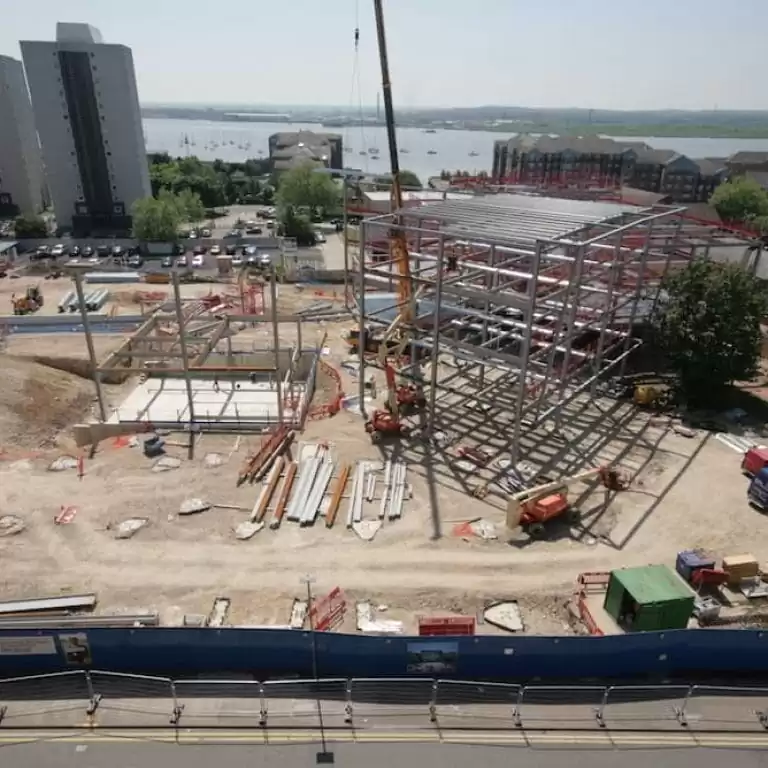
News Where are drones really going?
Drones – they have certainly burst back onto the technology scene lately.
That is not to say they ever truly went away (after all, we have posted a drone-focused blog once every couple of months over the past year!) But an influx of new designs is causing people to take note of unmanned aerial vehicles (UAVs) once again.
For a start, the never-ending PR pieces on doorstep delivery with drones continue to make the headlines. Amazon CEO Jeff Bezos first announced the Amazon Prime Air development in 2013 and two years on, they are still searching for a commercially viable way of running it.
Not least, the strict control on UAV flights imposed by the Federal Aviation Administration in the USA has hampered their efforts. In a bid to speed up the process, Google has joined Amazon and other like-mined businesses in joining the Small UAV Coalition.
Google themselves have actually completed a successful drone delivery already, in the isolated Australian town of Warwick. A full discussion on the Google and Amazon ‘drone wars’ is available to read on The Street.
But the dream that one of these – or any number of other competitors – will one day be making regular drone flights to deliver packages might be over (and no, not down to swarms of single-wheeled robots).
Despite a reported $14 billion (£9 billion) impact to California’s economy over the next 10 years, a potential new law – Senate Bill 142 – would restrict the flights of UAVs under 350 feet above properties without the owner’s permission. In short – the dream of ‘as-the-crow-flies’ short-notice delivery could be over. Sacramento is the city where Amazon and Google have been investing heavily in their drone infrastructures. And Sacramento happens to be the capital of California.
Faced with these challenges, innovators are not stopping, however. Earlier this week Sony and Japanese robotics firm ZMP – a joint venture called Aerosense, launched in July – announced their prototype camera drone.
It is shaped more like an aeroplane than a conventional UAV, but still takes off and lands vertically. The truly impressive statistics are its flying time – more than two hours – and its maximum speed – 106 miles an hour.
But the most exciting thing about this drone is its ability to carry fairly heavy loads. This Aerosense UAV can carry up to 10kg of weight, which is certainly more than enough to lug around some hefty camera equipment.
If you can tolerate the ridiculous amount of noise it generates, this could be a serious piece of kit for the growing industry surrounding drones.
From the large to the small and the ZANO is finally about to launch.
Torquing Robotics gained over £2.3 million from its Kickstarter campaign. Despite only setting a goal of £125,000, the project went on to become the most successful ever in Europe.
It is not as small as the Intel-backed Nixie, but the ZANO does perform a similar function and is available (or at least is about to commence shipping) now. About two months late to market, it is classed as a “mini-drone” and supposedly has the capability to follow you when out and about.
Although as yet, it does not.
As this BBC article explains, the outside mode is not yet working and flight time seems to be limited to about five minutes (despite a 15-minute claim). But this is apparently all down to software – the hardware itself is “future proofed”.
Putting aside its limitations and problems, the ZANO itself is a very exciting step towards an everyday drone for the average Joe. The lowest pledge needed on Kickstarter to actually receive one was just £139, with the RRP being listed at £170.
That is a good £100 below what you would pay for other ready-to-go UAVs. The added functionality of tracking and the size of ZANO – it fits into the palm of your hand – make it a potential market leader.
Commercial drone technology – both small and large – still has a way to come. But in just 10 months we have gone from a situation of no brand names or physical products being talk about, to a plethora of different development projects being undertaken.
10 months on from our first blog about drones UAVs are only increasing in value and applications. Could you be missing out on their benefits?
Time-Lapse Systems offer a range of aerial photography solutions alongside traditional time-lapse for construction projects. Find out how we can help you to monitor your construction site by contacting us here.